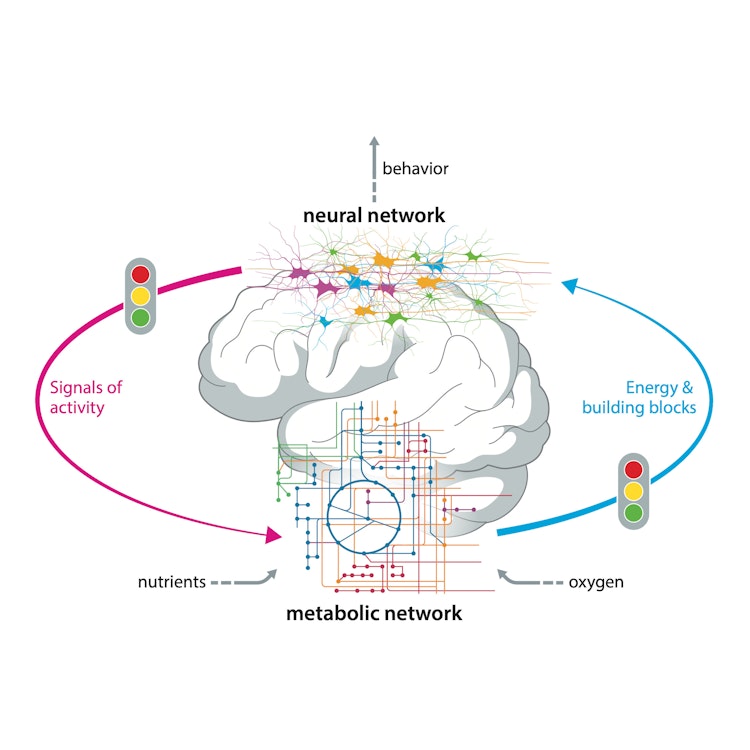
Scale-spanning crosstalk between metabolism and information processing
The research fields of brain intercellular signaling and brain energy metabolism evolved separately. One dealt with neurotransmission and the assembly of neural circuits and networks. The other focused on enzyme reactions and the compartmentation of biochemical processes between neurons and glial cells. High-order brain functions like cognition operate over long distances and can be fast. By contrast, metabolism is slow and, being limited by diffusion, operates over short distances. However, this comfortable division is now being challenged by the realization that lactate, beta-hydroxybutyrate, ATP/adenosine, and other key elements of the universal metabolic core also play the role of intercellular signals, acting via G proteincoupled receptors and other targets to modulate neural network activity, as showcased by exercise, fasting, and sleep. Here, we discuss the possible physiological meaning of such promiscuity. By arguing that it is no longer possible to understand signaling without understanding metabolism, and vice versa, the purpose of this feature is to raise awareness of the ongoing convergence and foster interdisciplinary collaboration.
Download
barros-2025.pdfResearchers




